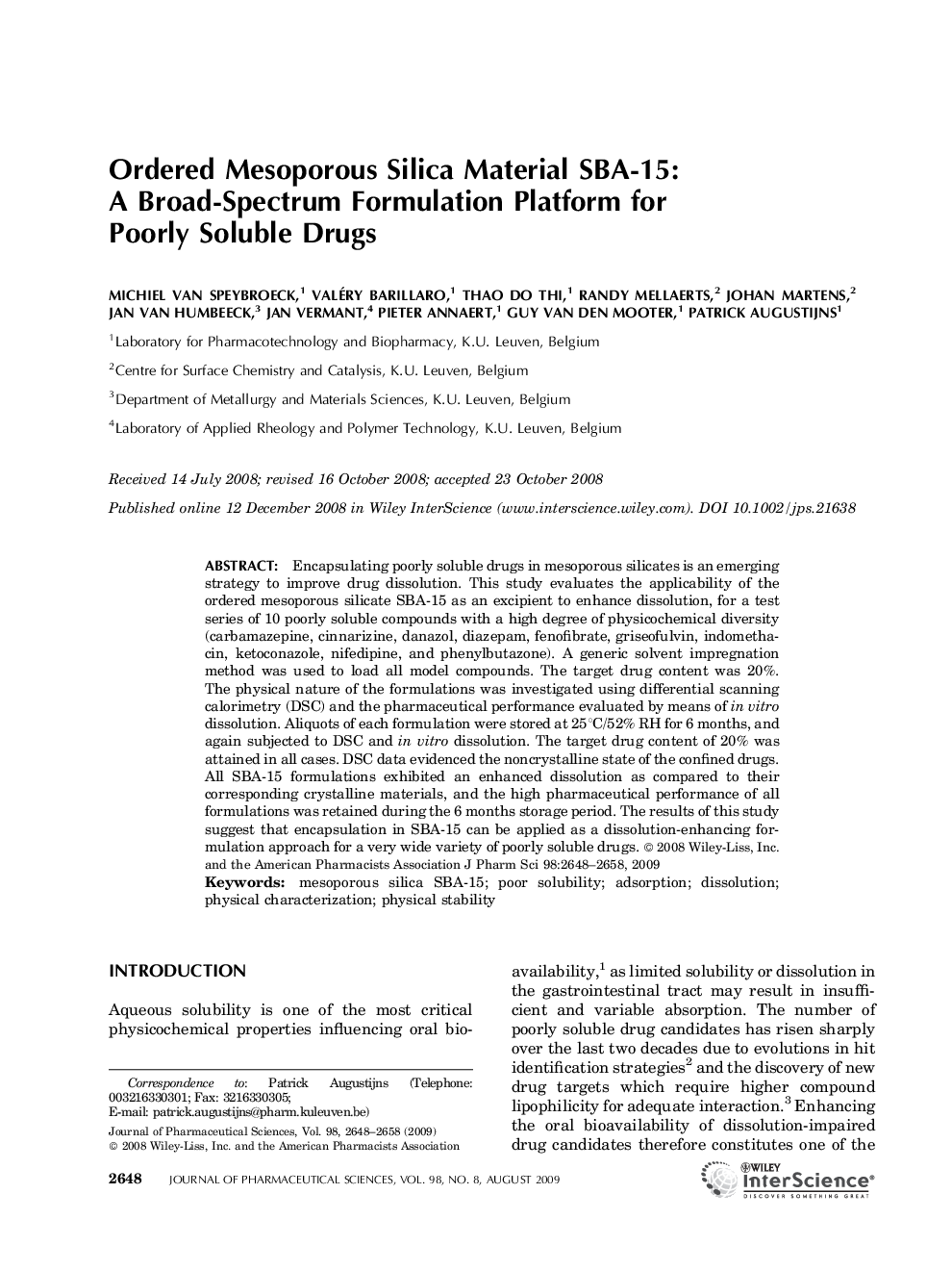| Article ID | Journal | Published Year | Pages | File Type |
|---|---|---|---|---|
| 2486985 | Journal of Pharmaceutical Sciences | 2009 | 11 Pages |
Abstract
Encapsulating poorly soluble drugs in mesoporous silicates is an emerging strategy to improve drug dissolution. This study evaluates the applicability of the ordered mesoporous silicate SBA-15 as an excipient to enhance dissolution, for a test series of 10 poorly soluble compounds with a high degree of physicochemical diversity (carbamazepine, cinnarizine, danazol, diazepam, fenofibrate, griseofulvin, indomethacin, ketoconazole, nifedipine, and phenylbutazone). A generic solvent impregnation method was used to load all model compounds. The target drug content was 20%. The physical nature of the formulations was investigated using differential scanning calorimetry (DSC) and the pharmaceutical performance evaluated by means of in vitro dissolution. Aliquots of each formulation were stored at 25 °C/52% RH for 6 months, and again subjected to DSC and in vitro dissolution. The target drug content of 20% was attained in all cases. DSC data evidenced the noncrystalline state of the confined drugs. All SBA-15 formulations exhibited an enhanced dissolution as compared to their corresponding crystalline materials, and the high pharmaceutical performance of all formulations was retained during the 6 months storage period. The results of this study suggest that encapsulation in SBA-15 can be applied as a dissolution-enhancing formulation approach for a very wide variety of poorly soluble drugs. © 2008 Wiley-Liss, Inc. and the American Pharmacists Association J Pharm Sci 98:2648-2658, 2009
Keywords
Related Topics
Health Sciences
Pharmacology, Toxicology and Pharmaceutical Science
Drug Discovery
Authors
Michiel Van Speybroeck, Valéry Barillaro, Thao Do Thi, Randy Mellaerts, Johan Martens, Jan Van Humbeeck, Jan Vermant, Pieter Annaert, Guy Van Den Mooter, Patrick Augustijns,
